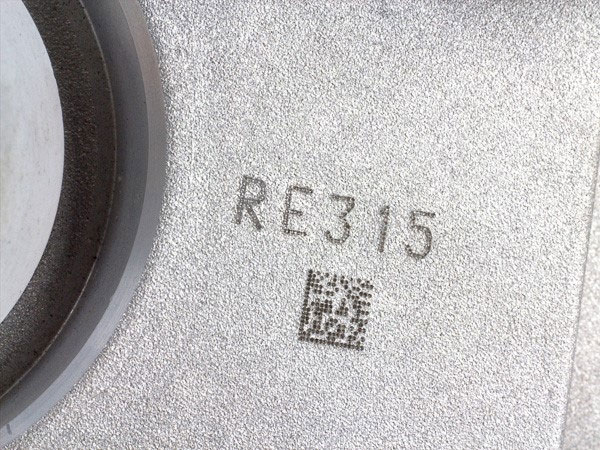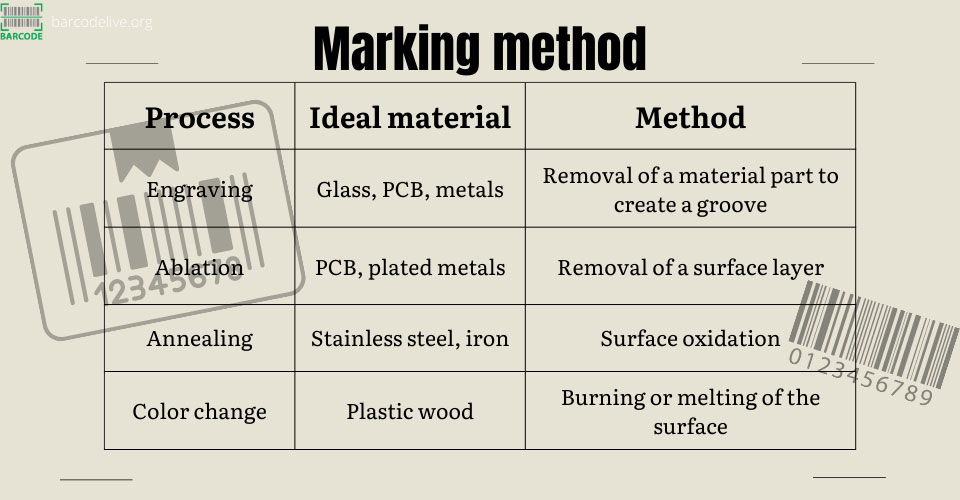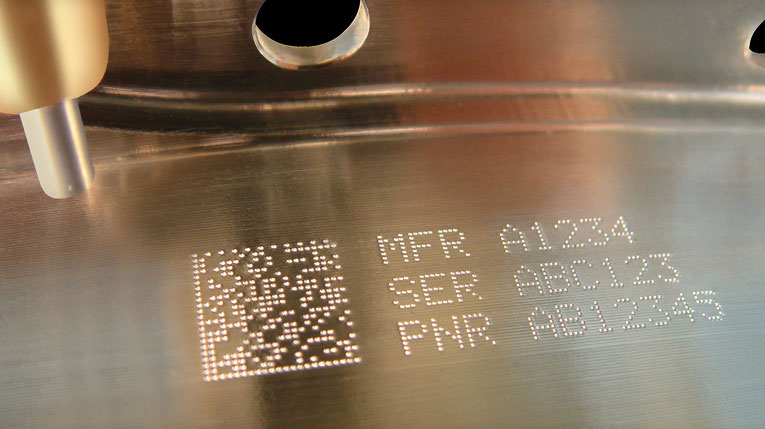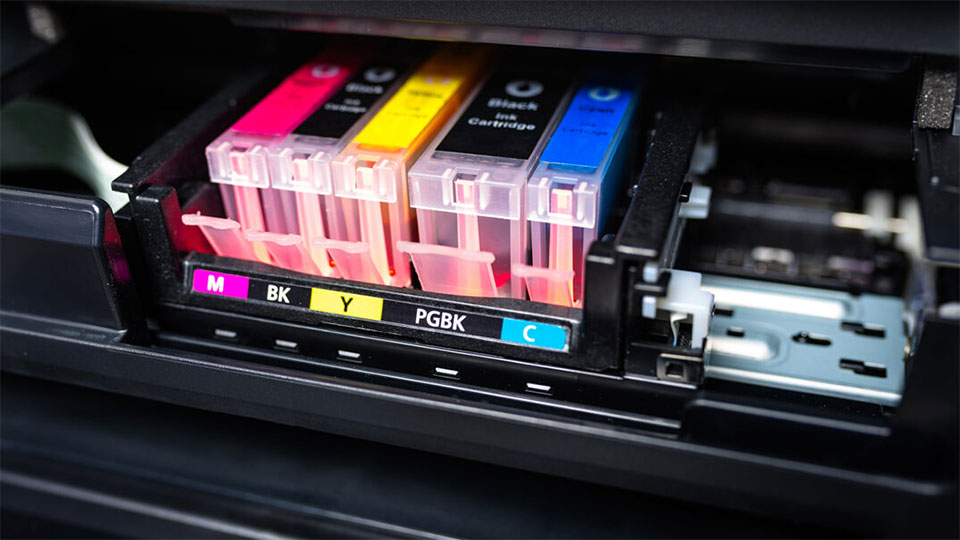Have you ever come across a DPM barcode?
Whereas most barcodes are printed on a paper packaging or product label, many parts or components in the manufacturing sector and work-in-process applications require direct barcode marking.
Generally, it is a procedure that allows users to directly mark a barcode on an object rather than printing the barcode on a label.
However, there is a lot of interesting information about it that no one would tell you, except us.
So don’t miss out on any parts of this writing!

A full guide on DPM barcode
What Is DPM?
Direct part marking (DPM) is a type of barcode symbologies.
It is a procedure that permanently marks equipment with a sort of code, generally a Data Matrix code or a QR Code.
The interpretation of "permanent" is frequently determined by the context in which it is used.
For example, an aircraft part can be in use for more than 30 years in the aerospace industry. On the other hand, life cycles in the telecommunications and computing industries can be as short as a few years.

An example of direct part marking
A laser or etching equipment is used to etch the code into metal, plastic, silicon, or glass.
DPM codes are most typically encountered in the automotive, telecommunications, electronic manufacturing, aerospace, and healthcare industries.
DPM codes offer critical information that is needed to identify parts, provide manufacture dates, and safety regulations, among other things.
To keep track of and manage the parts throughout their lifecycle, a specific DPM barcode reader is needed to scan the DPM codes and decode the information.
What Type Of Barcode Is Used For DPM?
There are numerous methods for converting information into machine-readable code.
The c and the QR code are the preferred codes; however, the most prevalent type of barcodes are DataMatrix codes.
In a nutshell, due to the quantity of error correction it provides, the 2D DataMatrix code is the preferable code.
This is particularly necessary since the products being marked are subjected to the rigors of their individual environments, making barcodes challenging to read (imagine a barcode printed on an engine block, to illustrate).
Exposure to dust, grime, and other contaminants would generally have an impact on the readability of the barcode, not to mention the actual handling of the objects.
The capacity to rectify errors allows badly damaged codes to be read accurately.
Notably, Motorola and NASA, among others, employ Data Matrix codes to mark parts.

A Data Matrix code
In addition to the Data Matrix code, QR code is also employed in the automotive industry.
This is because Denso Wave (a global provider of automotive components) created this code to track components in car manufacturing.
Why Was DPM Developed?
Complex technology and machinery can be made up of hundreds of parts.
Stamping a model number, business name, and/or date on a piece of machinery or metal product dates back hundreds of years.
However, automation and robotics have taken over manufacturing and production assembly lines, removing direct human intervention from the creation of parts and equipment.

Why was DPM developed?
When this transition occurred, businesses required a method to track each individual part throughout the product's entire life cycle, from parts manufacturing to production and assembly.
It needs to be throughout the supply chain, and even after deployment to whatever customer (governmental, commercial, or individual) for whom the product is aimed, as well.
DPM is the outcome of this requirement.
Who Uses A DPM Barcode?
As previously said, DPM is employed in many industries.

Industries that employ DPM barcode
-
Automotive industry
By etching QR codes onto automobile parts, the automotive industry pioneered the DPM trend.
DPM standards have been implemented to allow individual parts and assemblies to be tracked throughout the production process and supply chain.
This provides for the location of parts in the event that they must be recalled, for instance, and can help in other areas such as liability and warranty resolution.
Toyota employed QR codes to track parts and vehicle inventory. This trend might become more prominent as we reach an era of counterfeit goods.
-
Military
The military has long used DPM to identify everything from engine blocks to major engine systems including exhaust, valve trains, and intake manifolds.
Specifically, the Department of Defense utilizes it to track equipment and employs a unique code known as Unique Identification Marking.
As DPMs, they too use barcodes and QR codes.
-
Medical
Implants and surgical instruments are now being marked by medical device manufacturers.
Marking parts, like traditional barcodes, provides a rapid, easy, and error-free identifying mechanism.
Marking a part directly, rather than on a tag or label, ensures that the identifying information is neither lost or applied to the wrong part.

DPM is used in manufacturing medical devices
Besides, it is becoming more common in medical equipment to document its complete history, eliminate locations where bacteria can hide and thrive, satisfy particular requirements, and keep track of its lifecycle/end of usefulness.
-
Other industries
DPM is also common in the aerospace industry, where NASA has developed a direct part marking standard.
Furthermore, DPM is ideal for electronics since the codes can be exceedingly tiny while still being read by scanning technology.
Pharmaceuticals and food and beverage companies are also turning to DPM to help with product recalls and avoid counterfeit items from infiltrating their supply chains.
Why Use A DPM Barcode?
Compared to other kinds of barcode symbology, one of the primary advantages of DPM barcodes is that they are permanently imprinted on the parts they designate.
This increases the codes' reliability because they can endure situations that other typical barcode technologies may not.
An etched barcode on a product assures that a barcode will not be lost or destroyed as a result of being in a heated warehouse or outside in the weather.
This makes perfect sense for autos, for instance.

Using a DPM barcode has many advantages
When it comes to smaller objects, DPMs might be as small as two millimeters square in proportion to the part.
That occupies a small piece of a part's surface but packs a big punch in terms of components management.
What Are The Technologies For DPM Barcodes?
DPM is accessible in three major technologies: laser or chemical etching, dot peening, and ink jet printing.
Each of these has distinct pros and cons in terms of durability, cost, and readability.
Also, a suitable DPM barcode reader for each type is required.
So let's get into the specifics!
Laser marking
Laser marking is now the most prevalent method for using DPM technology.
It is suitable for a variety of materials and has various advantages, including high-quality marking, rapid productivity, and no consumables.

Laser marking
Laser marking works by altering the material's properties through interaction with a laser beam.
Based on the laser type and power, marking can be accomplished in the following ways:

Marking method based on laser type and power
Dot peening
Mechanical percussion is used to make dot peening markings, which literally punch holes in the material.
To replicate the dark and light elements that distinguish a bar code, the holes formed by mechanical pounding cause a varied reflection/diffusion of the incident light on the surface.
Dot peening is commonly used on metal parts and is widely employed in the automobile industry.

Dot peening
Inkjet printing
Ink jet printing is generally compatible with any substrate material, including plastic, metal, glass, and so on.
Because this approach relies on an ink deposit, the ink marking is less durable than other methods and may be undesirable for tough manufacturing conditions.

Inkjet printing
Read next: What Is Barcloud ASAP? A Complete Guide [Updated 2023]
You should pick DPM in the following cases:
-
The part is too small for a barcode label
-
The object will be subjected to environmental conditions that conventional labeling may not be able to endure.
-
When DPM may be more cost-effective than barcode labels
-
If the item's identity or data must be tracked throughout its life
-
If the item may be tagged while being manufactured
Since 2D codes can convey data in two directions on the code rather than just one, they can carry more data than linear codes.
Manufacturers prefer to utilize the 2D code not just for storage capacity, but also for relative size.
A 2D code's versatility allows for variations in the quantity of information stored in the barcode as well as the size of the item being tagged.
DPM barcode scanner tools are typically outfitted with specific illumination systems to increase code readability while employing DPM technology.
The surface of the object can be shiny, reflective, polished, or have a contrasting rough surface.
The code may be more or less visible or contrast as compared to the background, based on the marking technology employed.
DPM barcode readers are available in portable and fixed-mount variants to accommodate human or automated applications.
Conclusion
That is the end of today’s post about Direct part marking, also known as DPM. In this writing, we have gone through its definition, creation, advantages, availability, as well as scanning technologies. If you find this topic on DPM barcode useful, don’t hesitate to share it with others and comment to let us know!
![Barcode Sizes Explained & FAQs: An Ultimate Guide [The Latest]](https://barcodelive.org/filemanager/data-images/imgs/20221031/Barcode-Sizes-Tutorial_1.jpg)


10 Comments
Kiara Morales
Does DPM have any pitfalls?
Leave a Comment
Your email address will not be published. Required fields are marked *Barcodelive
If the code is not printed properly, the code will be difficult (or even impossible) to read. To determine whether or not the code is readable, a DPM verifier is used to grade the code and determine the quality level.
Leave a Comment
Your email address will not be published. Required fields are marked *Juan Baker
This is just awesome! Thank you
Leave a Comment
Your email address will not be published. Required fields are marked *Barcodelive
Sounds good
Leave a Comment
Your email address will not be published. Required fields are marked *Noah Ward
Thanks for another fantastic and helpful article!
Leave a Comment
Your email address will not be published. Required fields are marked *Barcodelive
You’re welcome
Leave a Comment
Your email address will not be published. Required fields are marked *Mia Hughes
I do have a question for you: How is the mark applied?
Leave a Comment
Your email address will not be published. Required fields are marked *Barcodelive
There are two methods of applying the code to the material: Dot peening and laser marking.
A dot-peening machine uses a sharp tool to impinge repeatedly at precise locations on the material.
Laser marking is another method. The process involves
Leave a Comment
Your email address will not be published. Required fields are marked *Theo Torres
From top to bottom didn’t skip a word. That’s how amazing and interesting your articles are
Leave a Comment
Your email address will not be published. Required fields are marked *Barcodelive
Thanks
Leave a Comment
Your email address will not be published. Required fields are marked *Leave a Comment
Your email address will not be published. Required fields are marked *